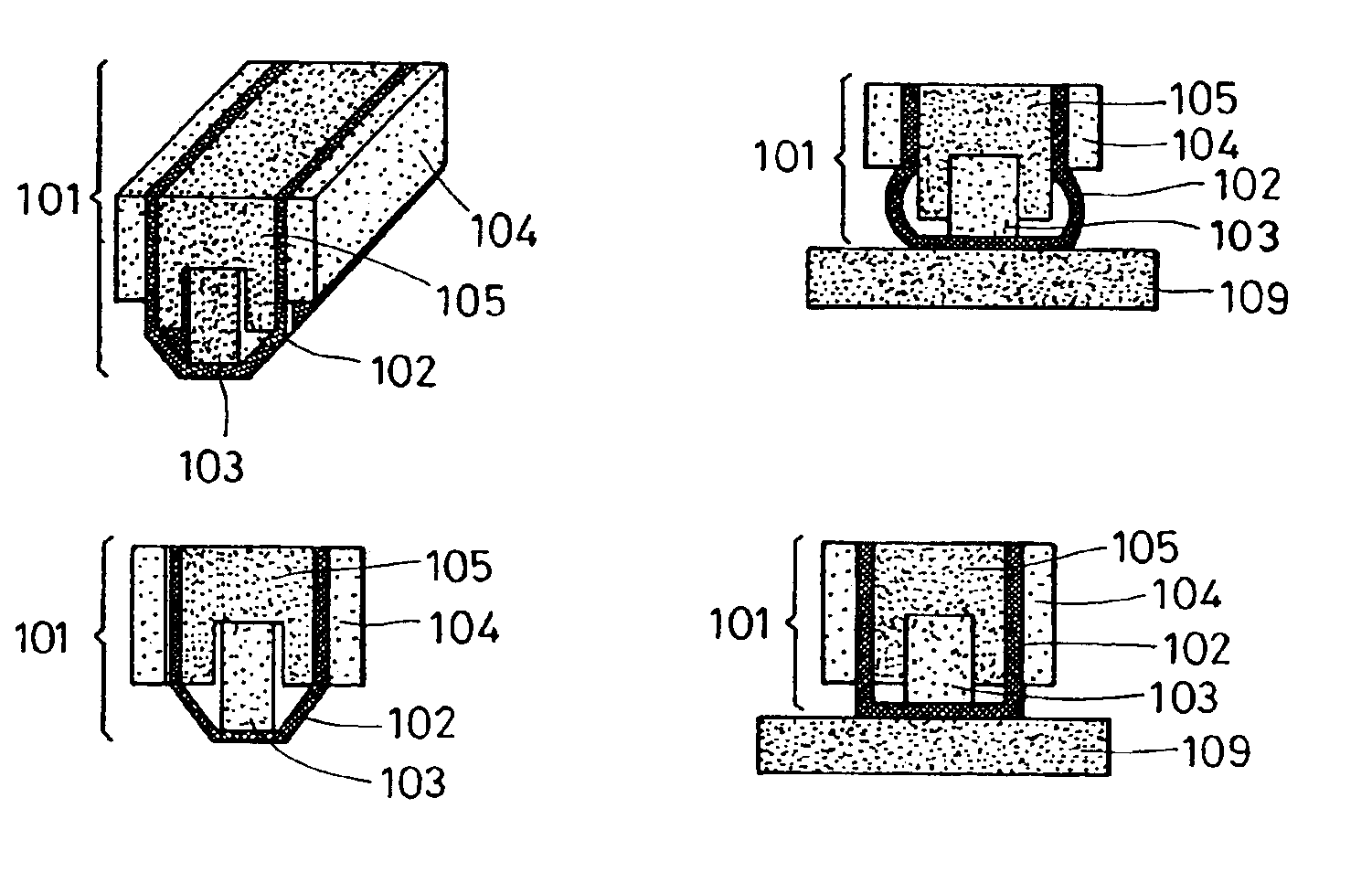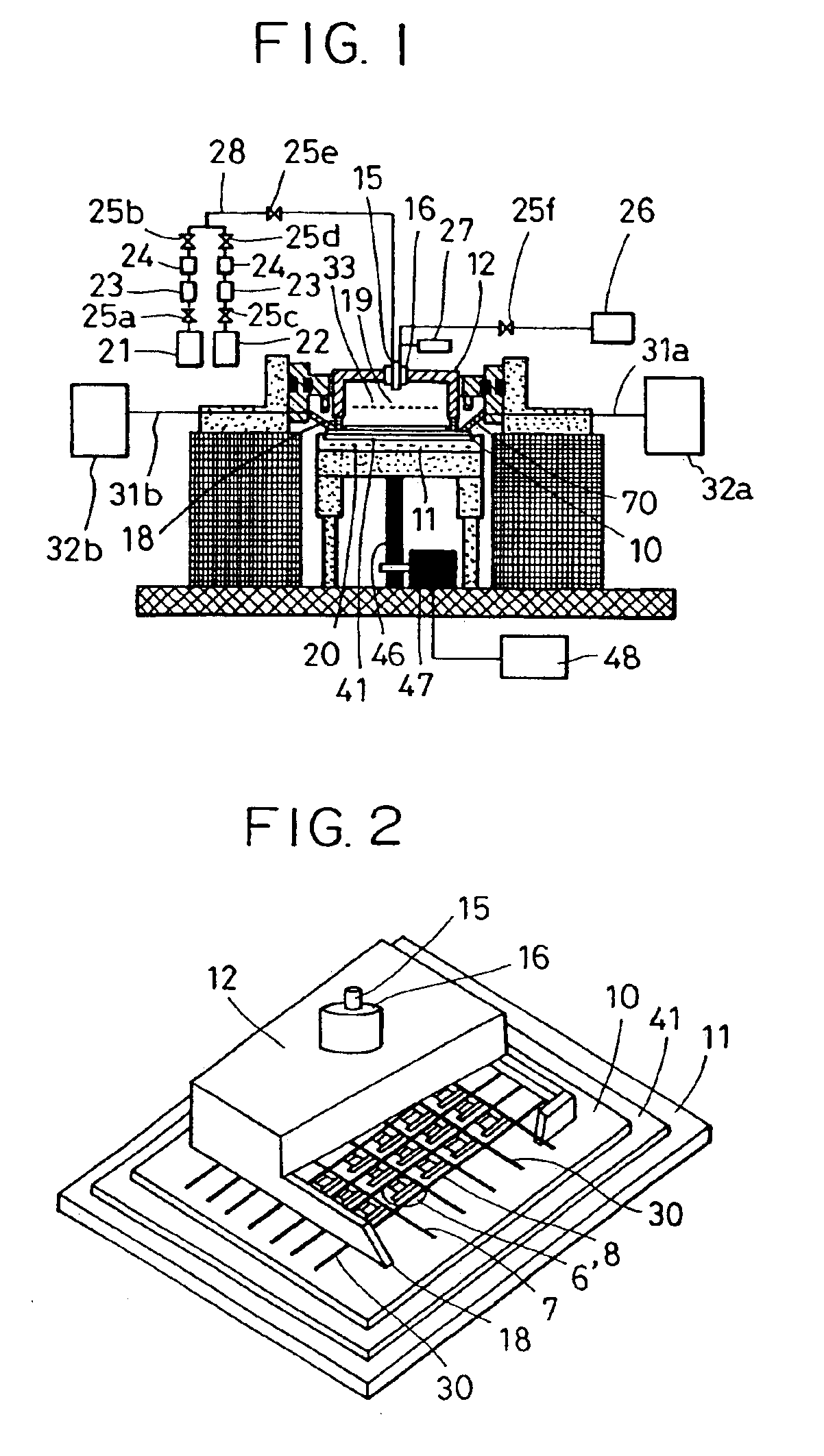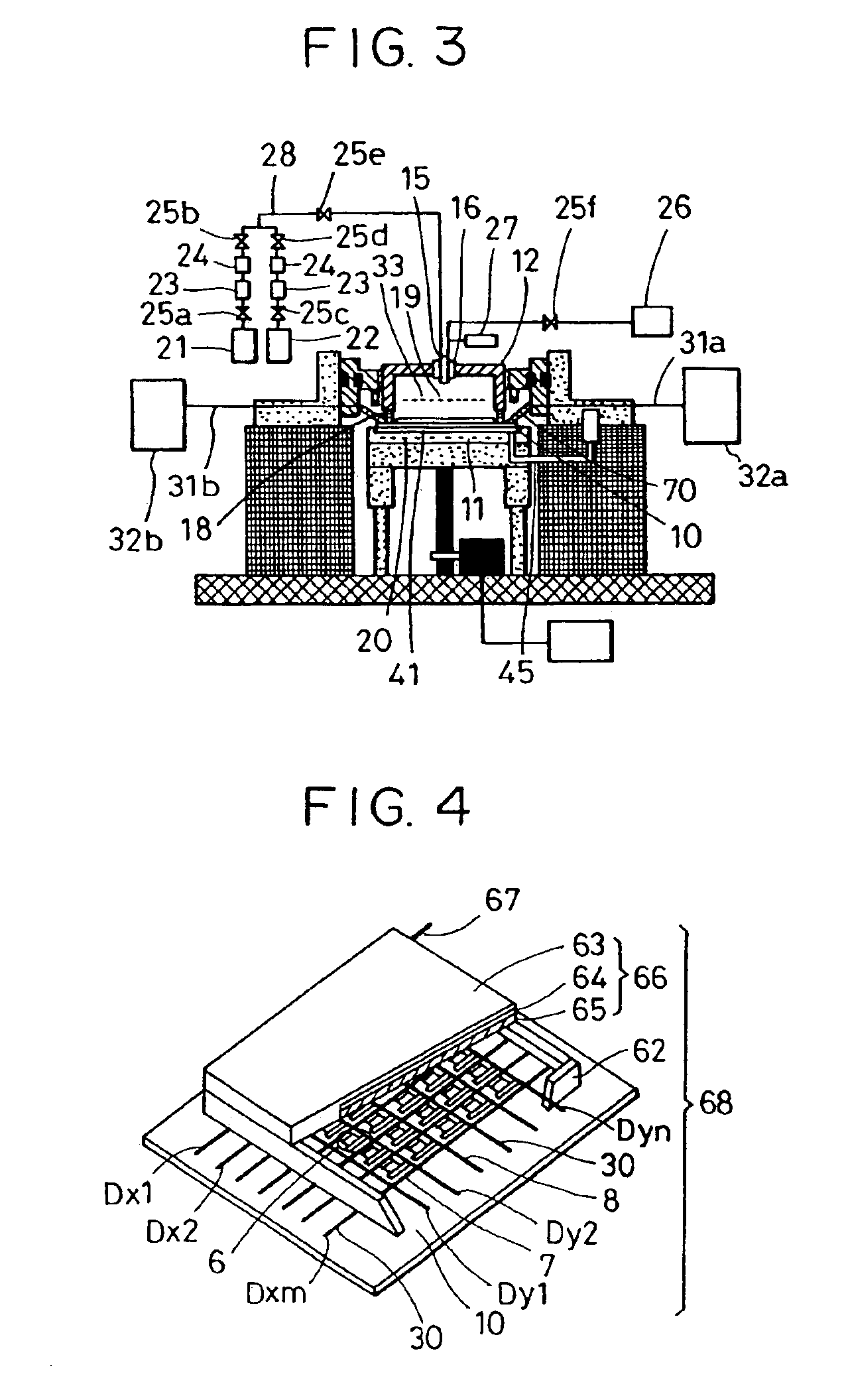Method for manufacturing a substrate and a display device
a technology of display device and substrate, which is applied in the manufacture of electrode systems, instruments, electric discharge tubes/lamps, etc., can solve the problem of taking a long time to evacuate panel space, and achieve the effect of reducing the size of the manufacturing apparatus, improving the manufacturing rate, and facilitating the electrical process
- Summary
- Abstract
- Description
- Claims
- Application Information
AI Technical Summary
Benefits of technology
Problems solved by technology
Method used
Image
Examples
example 1
[0069]In this example, an electron source provided with a plurality of surface-conduction electron-emitting devices was manufactured using a manufacturing apparatus in accordance with the present invention.
[0070]In a mesh sheet 115 shown in FIG. 7, a plurality of linear members 106A and 106B composed of a resin were woven into a mesh. The linear members 106A and 106B may be composed of, for example, a metal. In FIG. 8, as a conductive sheet 102, a mesh circuit connector (MCC), such as that manufactured by NBC Inc., was used, in which a conductive material layer 108 composed of copper or the like was formed (deposited) on the mesh sheet 115 (FIG. 7). The conductive material layer 108 may be composed of aluminum or gold. Alternatively, the conductive material layer 108 may have a multi-layered structure formed of copper-nickel-gold. In order to form the conductive material layer 108, plating was used. FIG. 9 is a cross-sectional view of the conductive sheet 102 in which the conductive...
example 2
[0076]In this example, a probe 101 was used which had substantially the same structure as that of the probe used in Example 1, apart from the fact that the lower parts of the sides of the block 105 were not covered by the support plates 104, as shown in FIG. 11. FIG. 12 is a cross-sectional view showing a state in which the probe 101 was pressed against the lines (not shown in FIG. 12) on a substrate 109. As shown in FIG. 12, the conductive sheet 102 became deformed so as to protrude at an area below the sides of the block 105. Due to such a deformation, the probe 101 was pressed against the lines on the substrate 109 without bending at the area of the conductive sheet 102 in contact with the lines, and without a locally applied load. Even if the probe 101 was used repeatedly, the conductive material layer 108 (FIG. 8) formed on the conductive sheet 102 was not disconnected or detached, and thereby durability was improved. In this example, the same advantages as those of Example 1 w...
example 3
[0078]In a probe 101 shown in FIG. 15, an elastic member 103 was fixed to a support plate 114 by an elastic fixing plate 110 and an elastic bar 111, and a conductive sheet 102 was fixed on blocks 105 at the sections supported by support plates 104. The blocks 105 were fixed on a block holding plate 112. By connecting the block holding plate 112 to the support plate 114 via a spring 113, the elastic member 103 was supported separately from the blocks 105 for supporting the conductive sheet 102 so as to be independently movable. In another embodiment, an elastic material, such as rubber, may be used instead of the spring 113.
[0079]When the probe 101 having the structure described above was pressed against at least one line formed on a substrate (not shown in FIG. 15), although the elastic member 103 shrank, since the conductive sheet 102 was not deformed, the probe 101 was pressed against the line without bending of the conductive sheet 102 in the area pressed against line and without...
PUM
| Property | Measurement | Unit |
|---|---|---|
| angle | aaaaa | aaaaa |
| width | aaaaa | aaaaa |
| pressure | aaaaa | aaaaa |
Abstract
Description
Claims
Application Information
 Login to View More
Login to View More - R&D
- Intellectual Property
- Life Sciences
- Materials
- Tech Scout
- Unparalleled Data Quality
- Higher Quality Content
- 60% Fewer Hallucinations
Browse by: Latest US Patents, China's latest patents, Technical Efficacy Thesaurus, Application Domain, Technology Topic, Popular Technical Reports.
© 2025 PatSnap. All rights reserved.Legal|Privacy policy|Modern Slavery Act Transparency Statement|Sitemap|About US| Contact US: help@patsnap.com



